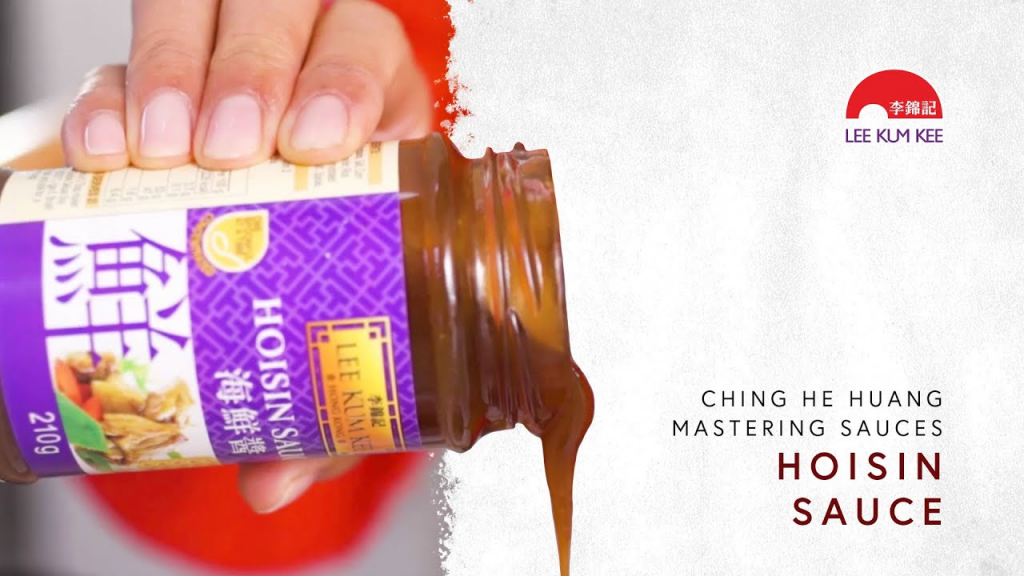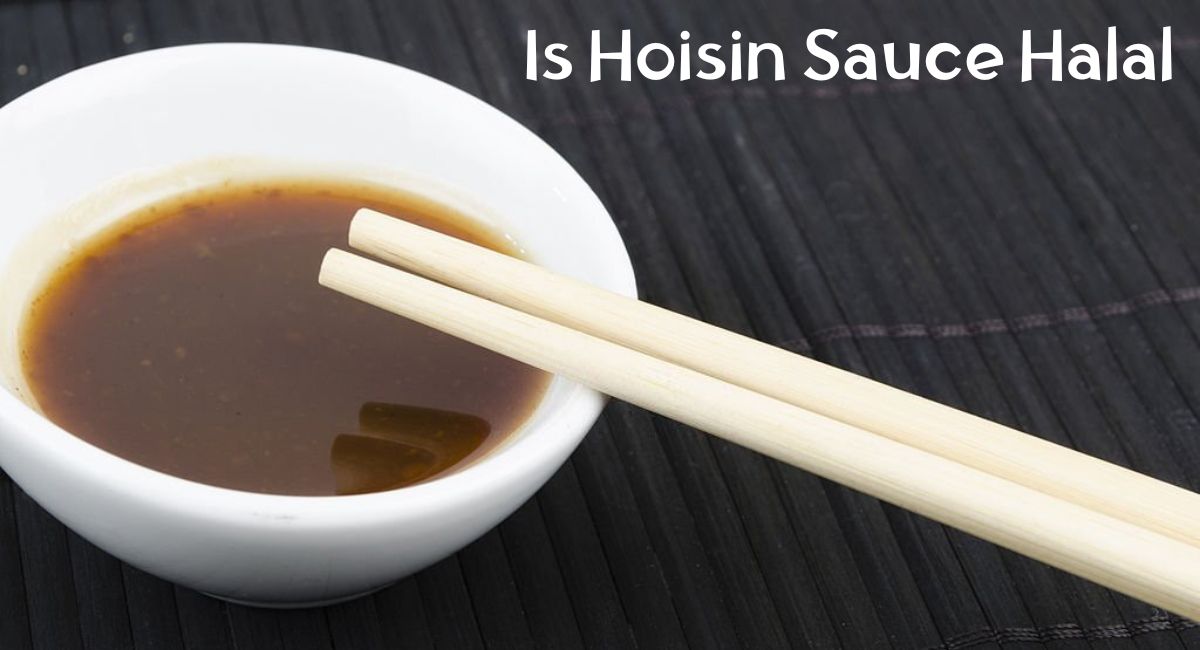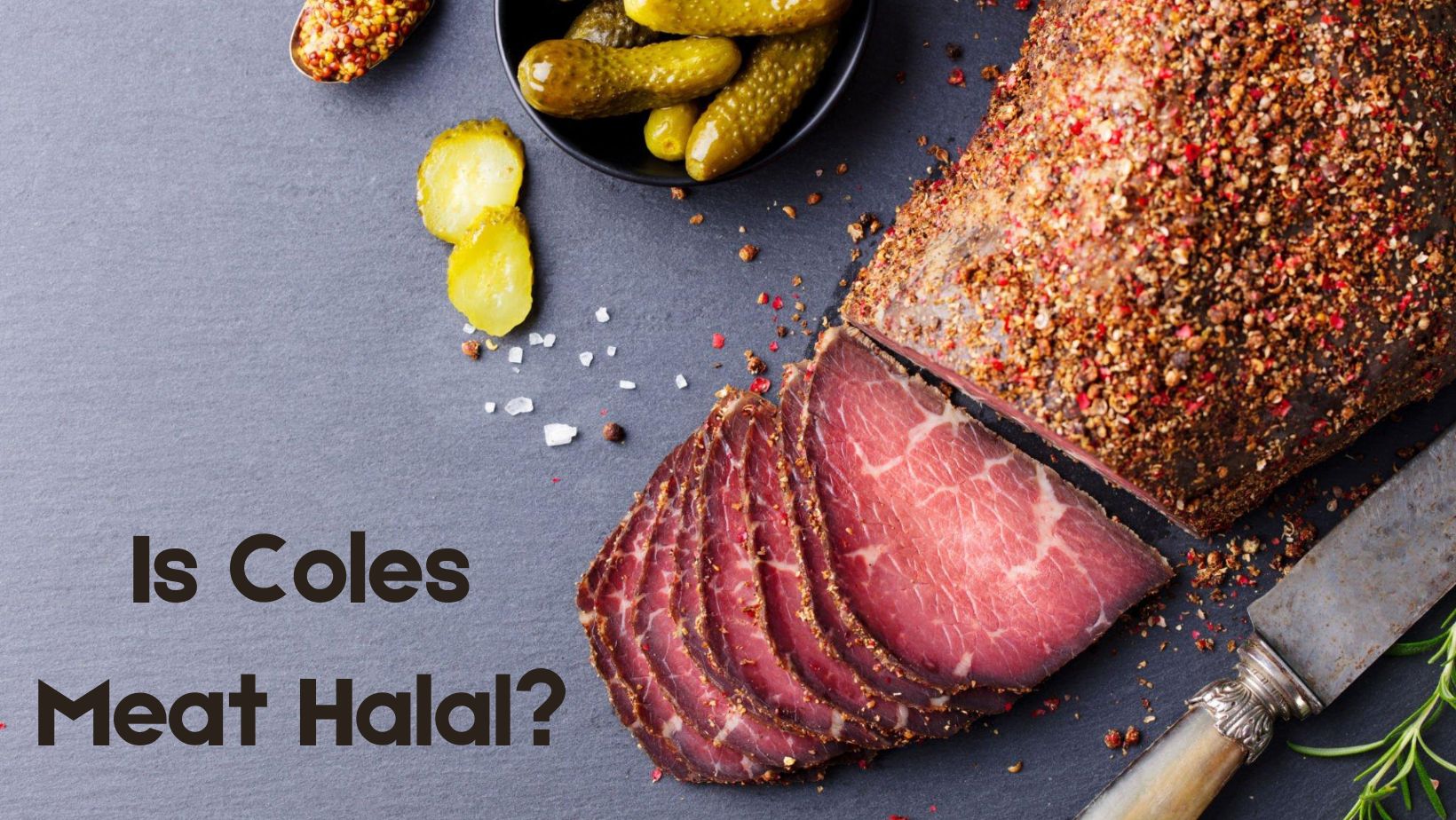Hoisin sauce, renowned for its sweet and savory profile, is a staple in many East Asian cuisines. Its thick consistency and deep, complex flavors add a distinctive touch to a wide variety of dishes, including stir-fries, glazes, marinades, and dipping sauces. However, the ingredients used in its production may vary among different brands and recipes, giving rise to uncertainty among individuals following halal dietary practices.
In this article, we delve into the realm of hoisin sauce, seeking to unravel the question that often arises in halal-conscious minds: Is hoisin sauce halal? To explore this subject thoroughly, we will examine the key components of hoisin sauce, delve into the concept of halal, and shed light on the considerations that determine its suitability for consumption within the halal framework.
Is Hoisin Sauce Halal
Determining whether hoisin sauce is halal or not depends on the specific brand and formulation of the sauce. While hoisin sauce generally consists of ingredients such as fermented soybean paste, vinegar, sugar, garlic, sesame oil, and spices, some factors can affect its halal status.
- Alcohol Content: The presence of alcohol in sauces can affect their halal status. Alcohol is considered haram in Islam, and if a sauce contains alcohol as an ingredient, it may not be considered halal. However, the amount of alcohol present in certain sauces, such as soy sauce, is generally low and may be considered permissible in small quantities.
- Animal-Derived Ingredients: Some sauces may contain animal-derived ingredients that are considered haram, such as gelatin, lard, or pepsin. Gelatin, for example, is often derived from pigs and is commonly used as a thickening agent in various food products. It’s important to check the ingredients list or contact the manufacturer to determine the source of such ingredients.
- Halal Certification: To ensure the halal status of hoisin sauce, it is recommended to look for products that have obtained halal certification from recognized halal certification authorities. Halal certification ensures that the product meets the requirements of Islamic dietary laws and does not contain any haram (forbidden) ingredients or additives.
To determine the halal status of a specific hoisin sauce brand or product, it is advisable to check the packaging for halal certification labels or contact the manufacturer directly for more information about the ingredients used and their halal status.
Additionally, even if the sauce contains alcohol, this doesn’t necessarily make it haram. According to Islam Q&A, if alcohol is fully absorbed into the food or drink and no or negligible traces of it remain, it is permissible to consume. However, if the essence of alcohol remains or its traces can be detected in the mixture, it is considered haram.
Is Lee Kum Kee Hoisin Sauce Halal

Lee Kum Kee Hoisin Sauce is a sweet sauce made from selected spices, ground soybeans, and sweet potatoes. It is an excellent choice for marinating, stir-frying, or dipping. The sauce is available in different sizes, including 20 oz and 36 oz bottles. It is currently available in 6 different variants.
- Hoisin Sauce
- Garlic Hoisin Sauce
- Lemongrass Chili Flavored Hoisin Sauce
- Lime Cilantro Flavored Hoisin Sauce
- Select Hoisin Sauce
- Vegetarian Hoisin Sauce
The Lee Kum Kee brand is known for its international quality certifications, including certifications for specialized product categories such as organic, gluten-free, kosher, and halal. Since the brand’s hoisin sauce is not specifically labeled as halal, we analyzed the ingredients of all hoisin sauce variants offered by the brand.
They include the following ingredients:
Sugar, Water, Fermented Soybean Paste (Water, Salt, Soybeans, Wheat Flour), Salt, Modified Food Starch, Sweet Potato Powder, Sesame Paste, Caramel Color, Spices, Dehydrated Garlic, Salted Chili Peppers (Chili Peppers, Salt), Acetic Acid, Fd&c Red No. 40, Potassium Sorbate Added As A Preservative, Soy Sauce (Water, Salt, Soybeans, Wheat Flour), Garlic, Soy Flour, Sesame Oil, Xanthan Gum, Citric Acid, Sodium Benzoate, Rice Vinegar, Lemongrass Puree, Lime Juice Concentrate, Sodium Citrate, Phosphoric Acid, Dehydrated Cilantro Leaves, Safflower Oil, Yeast Extract, Dried Sweet Potato
A quick analysis of the ingredients showed us that none of the Lee Kum Lee hoisin sauces contain any haram ingredients. They are save for halal consumption. However, since they are not halal certified, it is advisable to seek products with proper halal certification for assurance of compliance with halal requirements.
To obtain accurate and up-to-date information regarding the halal status of Lee Kum Kee Hoisin Sauce, it is recommended to contact Lee Kum Kee directly or refer to reliable halal certification authorities or organizations for confirmation.
What is Hoisin Sauce
Hoisin sauce is a thick and fragrant sauce commonly used in Cantonese cuisine. It is dark-colored in appearance and has a sweet and salty taste. Hoisin sauce is versatile and can be used as a glaze for meat, an addition to stir-fries, or as a dipping sauce. It is a key ingredient in many Chinese dishes, such as Peking duck and moo shu pork.
The name “hoisin” is derived from the Chinese word for “seafood.” However, hoisin sauce does not actually contain any seafood. The origins of hoisin sauce are not well-documented, and there is limited information available regarding its history. It is believed to have been traditionally used in southern Chinese cooking, specifically for seafood dishes.
While hoisin sauce is commonly associated with Chinese cuisine, it is also used in some Vietnamese dishes. It adds a unique flavor profile to recipes, combining umami with sweet, tangy, and sometimes spicy elements.
Types of Hoisin Sauce

Hoisin sauce is a versatile condiment used in various Asian cuisines, particularly in Chinese cuisine. While there may be variations in the specific ingredients and flavors of hoisin sauce, here are some common types and characteristics:
- Traditional Hoisin Sauce: Traditional hoisin sauce is a thick, dark sauce with a sweet and savory flavor. It is commonly used in Cantonese cuisine as a glaze for meats, a stir-fry addition, or a dipping sauce. The main ingredients typically include fermented soybean paste, garlic, chillies, and sesame, among others.
- Homemade Hoisin Sauce: Many people enjoy making their own hoisin sauce at home using various recipes. Homemade versions may incorporate ingredients like black bean paste, soy sauce, dark brown sugar, honey, rice wine vinegar, five-spice powder, sesame paste, and sriracha. These variations allow for customization based on personal preference.
- Regional Variants: While hoisin sauce is commonly associated with Cantonese cuisine, there may be regional variations in different Asian cuisines. For example, hoisin sauce is also used in certain Vietnamese dishes, adding its distinct flavor to Vietnamese cuisine. The Vietnamese name for hoisin sauce is “tương đen”.
- Flavor Substitutes: If you’re looking for a substitute for hoisin sauce, you can consider using other sauces that offer similar flavor profiles. Some options include oyster sauce, sweet bean sauce (tián miàn jiàng), or sweet bean paste (dòubàn jiàng).
It’s important to note that hoisin sauce recipes and variations can differ, and individual preferences may influence the specific ingredients and flavors used. Therefore, it’s always a good idea to refer to specific recipes or brands for more detailed information on the types of hoisin sauce available.
What is Hoisin Sauce Made of
Traditional hoisin sauce is made from a combination of ingredients that contribute to its distinct flavor profile. While variations may exist, the common ingredients found in traditional hoisin sauce include:
- Fermented Soybean Paste: This is the base ingredient of hoisin sauce and provides a rich and savory flavor.
- Garlic: Garlic adds aromatic notes and depth of flavor to the sauce.
- Red Chili Peppers: Red chili peppers contribute a spicy kick to hoisin sauce, balancing out the sweetness.
- Five-Spice Powder: This blend of spices, typically including star anise, cloves, Chinese cinnamon, Sichuan peppercorns, and fennel seeds, adds complexity and warmth to the sauce.
- Vinegar: Vinegar provides acidity, enhancing the overall balance of flavors in the sauce.
- Sugar: Sugar is added to hoisin sauce to provide sweetness and help create its characteristic thick and glossy texture.
To make hoisin sauce, the ingredients are typically combined and blended together until smooth using a food processor or a stick blender. The resulting sauce is thick, dark, and packed with flavors.
Is Hoisin Sauce Healthy
Determining whether hoisin sauce is healthy depends on various factors, including its nutritional content and your overall dietary goals. Hoisin sauce is known for its sweet and savory flavor, which comes from ingredients like sugar, vinegar, and fermented soybeans. However, it’s important to note that hoisin sauce can add calories and increase the sodium content of your meal.
Here’s a breakdown of the nutritional information for hoisin sauce per tablespoon:
- Calories: Approximately 35-80 calories
- Fat: Ranges from 0.5g to 0g
- Carbohydrates: Varies from 7.1g to 19g
- Protein: Typically around 0.5g
- Sodium: Varies between 258mg and 510mg
- Sugar: Typically around 4-4.4g
The calorie and nutrient content can vary depending on the brand and recipe of hoisin sauce, so it’s essential to check the specific product you’re using.
Considering its sugar and sodium content, it’s advisable to consume hoisin sauce in moderation. If you’re watching your calorie intake or following a specific dietary plan, it’s important to factor in the calories and nutrients from hoisin sauce into your overall meal plan.
Additionally, if you have specific dietary concerns, such as gluten-free or vegan requirements, it’s recommended to check the ingredient list or choose certified products that meet your dietary needs.
Ultimately, hoisin sauce can add flavor to your dishes, but like any condiment, it should be consumed in moderation as part of a balanced diet.
How to Use Hoisin Sauce

To cook with hoisin sauce, you can try the following methods and recipes:
- Stir-Fried Beef with Hoisin Sauce: This recipe involves marinating thinly sliced beef in a mixture of soy sauce, sherry, sesame oil, garlic, and ginger. The beef is then stir-fried with vegetables like carrots, mushrooms, and mangetout, and finally tossed with hoisin sauce. Serve it with Chinese noodles for a delicious and quick meal.
- Hoisin Chicken: This easy chicken stir-fry combines chicken, vegetables, and a savory hoisin sauce. The chicken is cooked with broccoli in a homemade hoisin sauce glaze that’s bursting with Cantonese flavors. It takes only 20 minutes to prepare and uses readily available ingredients.
- Recipes with Hoisin Sauce: There are numerous recipes available that incorporate hoisin sauce. Some popular options include sticky meatballs, slurpable noodles, Asian-inspired tacos, marinades, glazes for meats, and dipping sauces for spring rolls. Hoisin sauce can also be used in soups, fried rice, and as a flavoring in stews and braising liquids.
- Diluting Hoisin Sauce: If you’re new to hoisin sauce or find it overpowering, you can dilute it with other ingredients like soy sauce, rice vinegar, or water. This allows you to control the intensity of the flavor and gradually adjust it according to your taste.
- Using Hoisin Sauce as a Condiment: Hoisin sauce can be used as a table condiment, similar to ketchup or mustard. It can be drizzled over cooked meats, added to sandwiches or wraps, or used as a dipping sauce for finger foods like spring rolls or dumplings.
- Customizing Hoisin Sauce: If you prefer to make your own hoisin sauce, you can find authentic homemade recipes that include ingredients like soy sauce, fermented soybeans, sugar, garlic, sesame oil, and spices. Making your own hoisin sauce allows you to tailor the flavors to your liking.
Remember to adjust the amount of hoisin sauce based on your personal preference and the specific recipe you are following. Have fun experimenting with hoisin sauce in your cooking to add depth and delicious flavors to your dishes!
Interested in the halal certification of sauces that offer a salty, umami flavor profile akin to hoisin sauce? Check out these articles
Is Soy Sauce Halal Certified: Discover the halal status of soy sauce in this informative article. Learn about the ingredients and processes involved in making soy sauce and whether it aligns with halal dietary guidelines.
Is Fish Sauce Halal Certified: Dive into the world of fish sauce and its halal compliance. Uncover the origins and preparation methods of this popular condiment to determine if it meets the requirements of halal consumption.
Is Oyster Sauce Halal Certified: Explore the question of oyster sauce’s halal suitability. Delve into the ingredients and production of this savory condiment to find out if it’s compatible with halal dietary principles.
Is Worcestershire Sauce Halal Certified: Decode the halal status of Worcestershire sauce. Investigate the components and manufacturing process of this flavorful sauce to ascertain whether it complies with halal guidelines.






